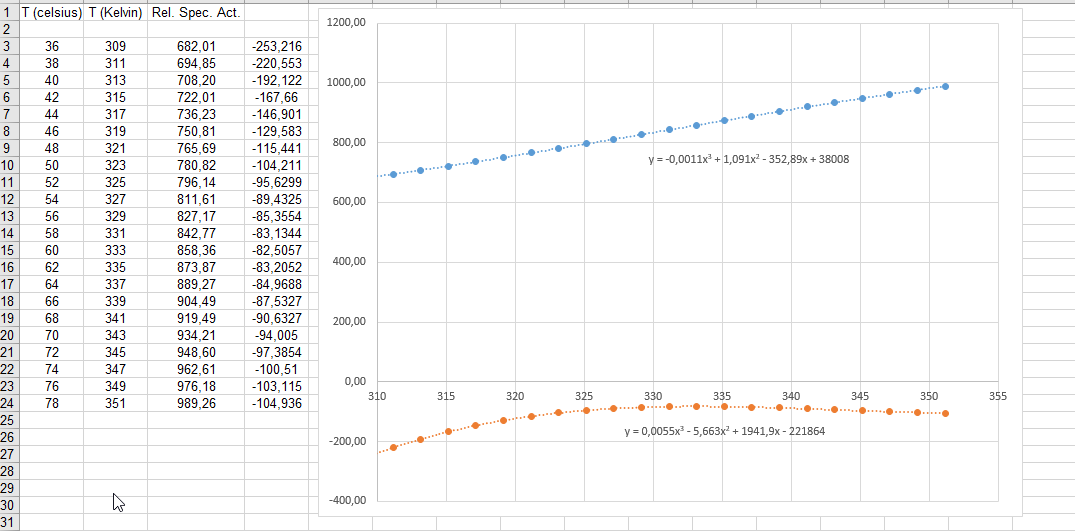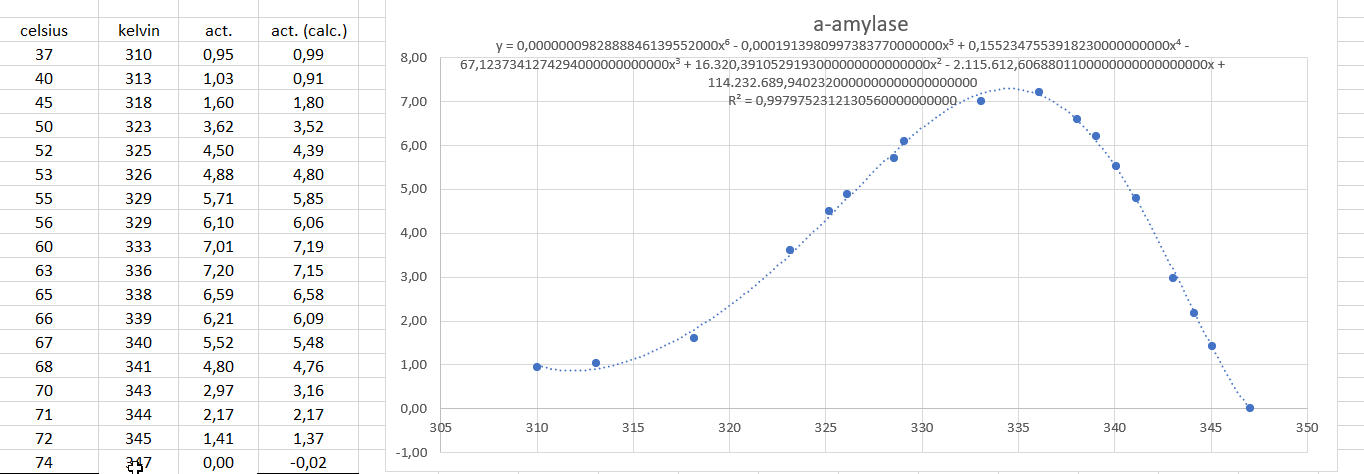prankster1590
Well-Known Member
- Joined
- Sep 24, 2019
- Messages
- 58
- Reaction score
- 11
Hi,
I found this paper which describes a method of predicting the sugar composition (Glucose, maltose, maltriose and dextrins) of the wort based on the temp program during mashing.
The relative specific activity (As(T)) is basicly the factor how much more or less the amylase catalyses the reaction of the substrate at a certain temp compared to a reference temp.
The paper gives a set of polynomes that describes the relative specific activity over a range of temperatures. The problem is that when I use these equations in excel that I get a totally different graph than what is given in the paper and I dont get why.
This the one one from the paper

This is what I get for a-amylase.

What goes wrong?
This is the paper
An original kinetic model for the enzymatic hydrolysis of starch during mashing - [PDF Document] (fdocuments.in)
I found this paper which describes a method of predicting the sugar composition (Glucose, maltose, maltriose and dextrins) of the wort based on the temp program during mashing.
The relative specific activity (As(T)) is basicly the factor how much more or less the amylase catalyses the reaction of the substrate at a certain temp compared to a reference temp.
The paper gives a set of polynomes that describes the relative specific activity over a range of temperatures. The problem is that when I use these equations in excel that I get a totally different graph than what is given in the paper and I dont get why.
This the one one from the paper

This is what I get for a-amylase.

What goes wrong?
This is the paper
An original kinetic model for the enzymatic hydrolysis of starch during mashing - [PDF Document] (fdocuments.in)
Last edited:



